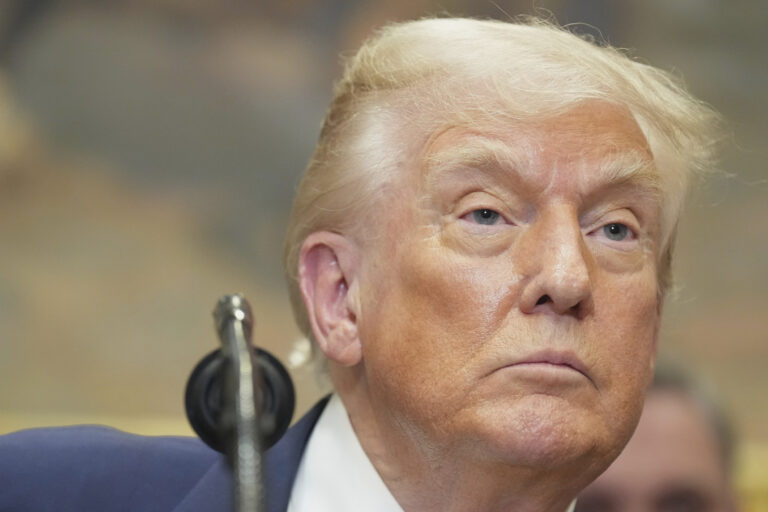The U.S. labor market slowed sharply over the past three months, according to new data released Friday, amid ongoing concerns over President Donald Trump’s tariff policies.
U.S. employers added 73,000 jobs in July, far lower than expected. In a survey by Bloomberg before the release of the report, forecasters had expected the nation to add around 109,000 jobs in July.
Hiring figures for May and June were also revised down sharply. A combined total of 258,000 fewer jobs were added over the past three months compared to previous reports.
Meanwhile, the unemployment rate rose to 4.2 percent from 4.1 percent in June.

Jacquelyn Martin/AP
Why It Matters
The nation’s economy has remained strong and resilient through the years of post-pandemic recovery, thanks mainly to the strength of U.S. consumers. But the unexpectedly weak report brings into question the overall health of the U.S. economy as Trump escalates his global tariff and trade policy.
For some experts, the significant downward jobs revisions indicates troubles ahead for the U.S. economy. But a weaker jobs report also makes it more likely that the Federal Reserve, which has so far been reluctant to slash its key interest rate, would implement a cut sooner rather than later—potentially even in September.
What The Latest Jobs Report Tells Us
The health care and social assistance industries saw the largest gains in July, adding 73,300 jobs.
But the gains were dragged down by government cuts – around 12,000 federal jobs were lost last month. Overall, the federal workforce now has 84,000 fewer jobs than it did at its peak in January.
Alex Jacquez, a former special assistant to the president for economic development and industrial strategy, told Newsweek that Friday’s jobs report “confirms that Trump’s policies have been weighing down the economy.”
He added: “Big downward revisions for May and June show that Trump’s chaotic trade policies likely impacted the labor market more than we thought earlier in the year, halting a strong jobs market. Stripping out the health care sector, the U.S. has lost jobs in each of the last three months.
“Moreover, there is no sign of an industrial renaissance. Manufacturing jobs have contracted for three straight months and construction jobs are stagnant.”
Michael Negron, senior fellow for economic opportunity at the Center for American Progress and former special assistant to the president for economic policy, told Newsweek that the “disappointing jobs numbers are the latest sign, after recent data releases showing an uptick in inflation, decline in business investment, and slowdown in consumer spending, that the economy is starting to buckle under the weight of President Trump’s tariff strategy.”
Despite weakening signs, Realtor.com chief economist Danielle Hale said the “relative stability” of the country’s unemployment rate shows that it remains somewhat resilient.
“Even as hiring, or labor demand, has slowed, labor supply has also slowed, keeping the labor market relatively balanced,” she told Newsweek. “Meanwhile, earnings climbed by 3.9 percent, modestly above recent readings.”
The Fed’s Awkward Position
Earlier this week, the Fed with Chair Jerome Powell at the helm decided to hold interest rates steady, even as the U.S. president has repeatedly expressed his frustration against the immobility of the central bank’s key interest rates over the past few months.
After the release of the report, Trump doubled down on his criticism of Powell, writing on his social media platform Truth Social: “Too Little, Too Late. Jerome ‘Too Late’ Powell is a disaster. DROP THE RATE! The good news is that Tariffs are bringing Billions of Dollars into the USA!”
At this point, it is not only Trump who is questioning the Fed’s reluctance to cut rates: July’s decision saw two dissenting votes from Governors Bowman and Waller, who would have both preferred to lower interest rates.
Melissa Cohn, Regional Vice President of William Raveis Mortgage and a 43-year mortgage industry veteran, told Newsweek earlier this week that the economy still seems to be “chugging along,” giving the Fed no reason to cut rates.
The latest jobs report might just make it that much harder for the Fed to keep this stance at their next meeting.


